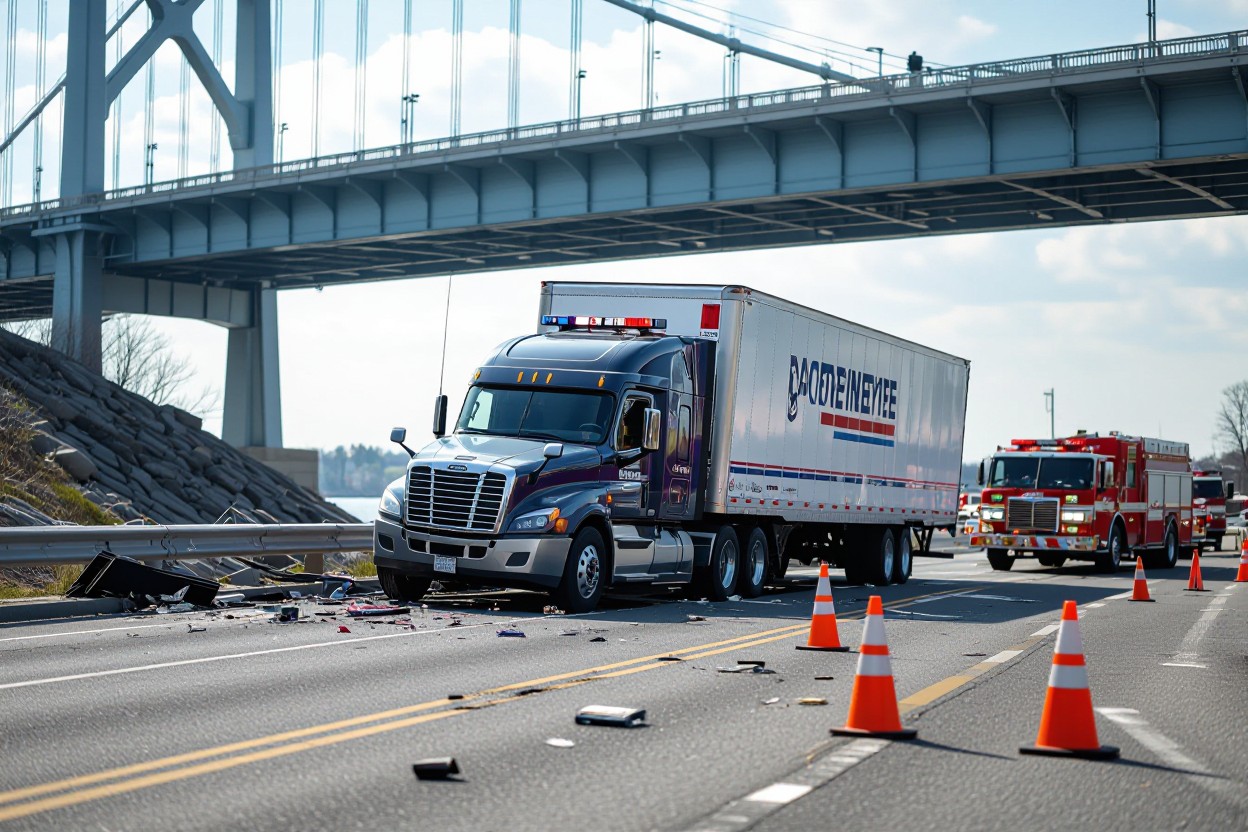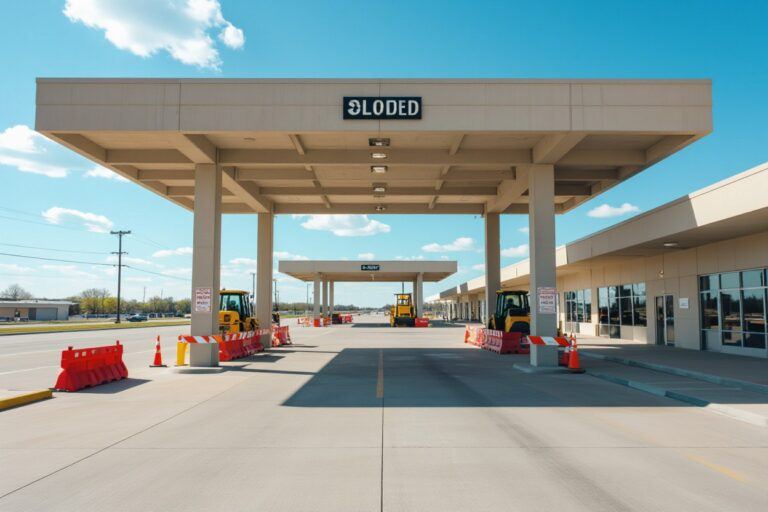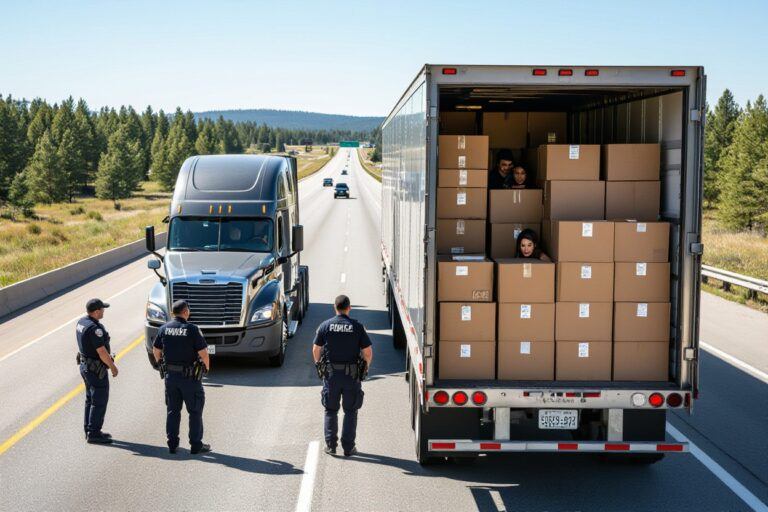
A bobtail truck crashed off the Delaware Memorial Bridge, and the truck driver is now presumed dead, according to the latest report. This tragic incident serves as a significant reminder of the inherent dangers you face on highways, especially near large and complex structures like bridges.
The accident took place when the vehicle went off the bridge, resulting in a serious risk not only for the driver but potentially for other motorists and rescue teams. You need to stay vigilant when driving near bridges, ensuring that you maintain control and adhere firmly to safety protocols. The forces at play in such an environment can quickly escalate an ordinary mishap into a life-threatening event.
Emergency responders quickly arrived at the scene, but the situation was aggravated by the challenging location and the condition of the vehicle after the crash. Your awareness of emergency numbers and preparedness to act in these moments can be lifesaving, whether for yourself or others involved in accidents.
While reports confirm the truck driver is presumed dead, take this as a sobering example of why you must prioritize safety measures at all times while driving. Protective driving techniques, adherence to road signs, and proper vehicle maintenance are key elements to reducing risks of such disastrous outcomes.
To sum up, this unfortunate event highlights not only the dangers you encounter in the trucking profession but also the need for constant caution and care on every journey you undertake. You hold the responsibility for your own safety and must treat every moment behind the wheel with the utmost seriousness.
Preliminary Findings from Authorities
Authorities have initiated an investigation into the incident involving the bobtail truck that crashed off the Delaware Memorial Bridge. Initial reports suggest that poor weather conditions and possible mechanical failure might have contributed to the crash. Law enforcement and rescue teams responded swiftly, but the truck driver is currently presumed dead. You should stay updated as more detailed information, including official statements and analysis, is expected to be released in the coming days.
Eyewitness Accounts and Their Importance
Eyewitness accounts are vital in piecing together the events leading to the crash. Those who observed the incident can provide first-hand information about what happened moments before and after the truck went off the bridge. Your attention to these accounts can help clarify conflicting details and support authorities in their ongoing investigation.
When you consider eyewitness testimonies, you gain access to perspectives that technology and initial evidence might miss. These accounts often reveal subtle factors like road conditions, driver behavior, or unusual vehicle movements that are critical for a comprehensive understanding of the incident. Your engagement with these narratives not only informs you but also assists investigators in forming a well-rounded picture of the event, which is necessary for enforcing safety measures and preventing future accidents.

Unique Challenges Faced by Bobtail Truck Drivers
As a bobtail truck driver, you operate a tractor without a trailer, which significantly affects vehicle dynamics and stability. The reduced weight on the rear axles can make handling tricky, especially during sharp turns or sudden stops. You also face visibility limitations and must navigate tight spaces or congested areas with precision. These challenges demand heightened awareness and skill, as any miscalculation can lead to serious accidents or loss of control, increasing the inherent risks linked to bobtail driving.
Safety Protocols and Regulations
To protect yourself and others on the road, it’s necessary to follow strict safety protocols and regulations tailored to bobtail operations. These include regular vehicle inspections, maintaining appropriate speed, and ensuring your driver’s qualifications meet federal and state standards. Compliance with load securing and communication procedures can significantly reduce the likelihood of accidents and improve your ability to respond to unexpected hazards.
Safety protocols for bobtail truck drivers emphasize consistent vehicle maintenance and adherence to operational guidelines that address the unique risks you face. For example, because the truck’s handling changes without a trailer, you must be extra cautious with braking distances and maneuvering. The regulations also mandate that you stay updated with licensing and training requirements and use protective equipment whenever applicable. By complying with these rigorous standards, you enhance your safety and contribute to safer roadways, mitigating the often dangerous conditions encountered during bobtail driving.
The Impact on the Driver’s Family and Friends
When a truck driver is presumed dead in an accident like the bobtail truck crash off the Delaware Memorial Bridge, it deeply affects their family and friends. You may witness the overwhelming grief, uncertainty, and emotional struggles they face as they cope with the loss. The sudden tragedy leaves loved ones trying to manage practical matters while dealing with profound sadness, altering their daily lives and emotional well-being forever.
Support Systems for Affected Communities
In the aftermath of such incidents, it’s important for you to know that support systems exist to help affected communities. These include counseling services, local support groups, and assistance programs designed to provide emotional and practical aid. Engaging with these resources can help you or those you care about navigate the aftermath more effectively, offering a network of care during difficult times.
Beyond immediate emotional support, these support systems play a vital role in fostering resilience within the community. By providing access to mental health professionals, financial aid, and ongoing social support, they help you manage the long-term impact of trauma. The cooperation between local authorities, organizations, and neighbors creates a safety net that can reduce feelings of isolation and empower those affected to rebuild their lives.
Potential Legal Outcomes for the Incident
In the aftermath of the bobtail truck crash off the Delaware Memorial Bridge, you may face complex legal proceedings involving negligence claims, liability assessments, and insurance disputes. Authorities will investigate factors such as driver conduct, vehicle maintenance, and roadway conditions to determine fault. Should negligence be proven, consequences could range from financial penalties to criminal charges, especially if safety regulations were ignored. Understanding these potential outcomes helps you prepare for the legal challenges ahead and ensures that your rights and responsibilities are clearly defined during the investigation process.
Broader Impacts on Trucking Regulations and Safety
The incident could prompt regulatory agencies to review and strengthen trucking safety standards, particularly regarding bobtail truck operations near critical infrastructure like bridges. You might see increased enforcement of vehicle inspections, mandatory driver training enhancements, and stricter speed and load regulations. These changes aim to reduce the likelihood of similar accidents, enhancing overall roadway safety for truckers and the public alike.
Following this crash, there is potential for sweeping reforms that directly affect your role in the trucking industry. Regulatory bodies may introduce new mandates focusing on bobtail truck stability and handling requirements, recognizing the unique risks these vehicles present. Additionally, technological advancements like improved monitoring systems and driver-assist features could become standard, offering you greater protection on the road. While these enhancements may impose new obligations, they ultimately serve to safeguard your safety and reduce hazardous incidents in the future.

Historical Context of Trucking Safety in the U.S.
Trucking safety in the U.S. has evolved through stringent federal regulations and technological advancements aimed at reducing accidents. Over the decades, improvements such as mandatory rest periods, electronic logging devices, and enhanced vehicle inspections have significantly lowered crash rates. Despite these measures, challenges remain due to the demanding nature of your job and the inherent risks you face on busy highways.
Recommendations for Future Prevention
To improve your safety, it is crucial to adopt advanced driver-assistance systems (ADAS) and continue strict compliance with hours-of-service rules. Investing in comprehensive training programs that simulate hazardous conditions can prepare you better for unexpected situations. Advocating for infrastructure improvements and increased rest stops also supports safer driving environments for everyone on the road.
Enhancing your safety relies on a combination of technology, training, and infrastructure. Upgrading your vehicle with collision avoidance systems and lane departure warnings can help prevent accidents before they occur. Additionally, participating in refresher courses equips you with strategies to handle adverse weather and complex traffic scenarios confidently. By supporting improved road facilities and advocating for consistent enforcement of safety standards, you contribute to a safer trucking industry, protecting yourself and others from potentially devastating incidents.
Summing up
Considering all points, the incident involving the bobtail truck crashing off the Delaware Memorial Bridge highlights the serious risks truck drivers face daily. As you follow such reports, it is important to stay informed about safety measures and respond promptly to updates from authorities. Your awareness contributes to a broader understanding of roadway dangers and supports efforts to improve transportation safety for everyone involved in trucking and travel.






